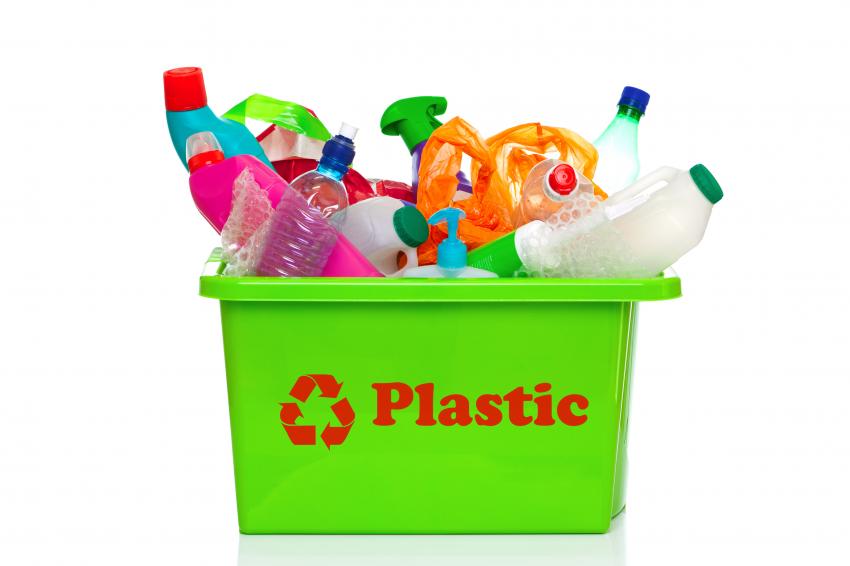Upcycling of Post-Consumer PLA Waste
A Gateway to Circular Bioeconomy
Polylactic acid (PLA) is one of the most promising and frequently used polyesters from this category. Due to its flexible and versatile applications ranging from disposable cutlery and degradable sutures to rigid packaging and extrusion coatings, the global production capacity of PLA is expected to grow to 826,000 metric tons by the year 2023. However, the dominant market for PLA is food packaging.
Though PLA is a biobased alternative to fossil-based plastics, its production is highly raw material and energy intensive (2.39 kg corn cobs, 50 kg water and 54 MJ of fossil energy is required to produce one-kilogram PLA). With an increasing population, utilization of land for the growth of these renewable raw materials as feedstock for PLA production can compete with that utilized for food production. Though PLA is a potential high-volume commodity material, there is no infrastructure in place to separately collect and recycle PLA. Therefore, it often ends up in other conventional waste streams, thereby contaminating them and disturbing the state-of-the-art municipal recycling strategies.
Researchers at the Fraunhofer ICT along with Fraunhofer LBF and Fraunhofer Umsicht have developed a strategy to chemically recycle post-consumer PLA waste into a lactate ester (ethyl lactate) which finds its commercial applications in chemical synthesis, magnetic tape coatings, and the plastic, metal, wood and food industry. The process presents an economically and environmentally sustainable recycling strategy, capable of nearly completely depolymerizing the PLA substrate along with a high yield of ethyl lactate (80 %) in a relatively short period of time (< 20 min) and under mild reaction conditions (< 70°C, ambient pressure). A salient feature of this system is the use of a conventional and commercialized yet eco-friendly, organic catalyst. Another feather in the cap of this process is the use of an eco-friendly, low-boiling solvent, capable of selectively dissolving the PLA fraction from a mixed, plastic waste stream, primarily constituting PET and PP. This flexible process scheme is capable of handling virgin PLA of different grades (Total Corbion LX175 and NatureWorks PLA 6032 D) as well as post-consumer PLA cups. The process has been scaled up in the year 2019 from a laboratory scale to a technical scale (15 L) and its robustness was demonstrated by recycling post-consumer waste PLA cups, without any effect on the yield of the lactate ester.
The process was developed as a part of the “Fraunhofer Cluster of Excellence Circular Plastics Economy CCPE,” in which, in addition to the Fraunhofer ICT, further five Fraunhofer institutes, namely, Fraunhofer Umsicht, Fraunhofer LBF, Fraunhofer IML, Fraunhofer IAP and Fraunhofer IVV are exploring ways for sustainable transformation of the entire plastic value chain into a circular economy.
The production of both PET and PLA is expected to increase towards 2021, with the percentage increase of PLA being higher than that of PET. On the basis of its nature of application, the estimated maximum contamination of PLA in waste PET streams could vary between 0.8% and 8% by 2021. In such a scenario, innovative methods for removal of PLA would be required in order to assure high-quality recycled PET. In addition to this, the huge demand for PLA in the consumer market coupled with high feedstock and energy demands for its production is a major concern for the manufacturers of PLA. In this situation, implementing the aforementioned strategy will not only completely utilize the valuable polyhydroxy acid even after the end of its conventional life cycle but will also add value to the supply chain and catalyze the creation of a sustainable and resource-efficient world. Further, the process can be looked upon as a prospective provisional boon to eliminate the potential PLA contamination in the waste PET stream.
In addition to this, adaptation of a circular economy approach for the synthesis of virgin PLA with this strategy would lead to approximately 50% energy savings as compared to the conventional PLA production processes, starting from corn cobs as the feedstock. This will free up farmland (5.7 m2/kg PLA) to produce crops for human consumption or for livestock thereby contributing to the UN’s Sustainable Development Goals. However, this is still under investigation at Fraunhofer Umsicht.
Thus, in a nutshell, the developed concept envisages to resolve the problems at the confluence of chemical recycling of PLA (one of the most promising and frequently used biopolymers) and sustainable production of lactate esters (potential alternative to conventional petrochemical solvents) by strictly abiding to the fundamentals of green chemistry, thereby setting up the foundation for a “circular bioeconomy” and in turn, serving as a boon to “circular economy” of conventional plastics and to benefitting different elements across the entire societal value chain.
Note: References for this article can be requested from the authors.
Contact
Fraunhofer Institute for Chemical Technology
Joseph-von-Fraunhofer-Str. 7
76327 Pfinztal
Germany








